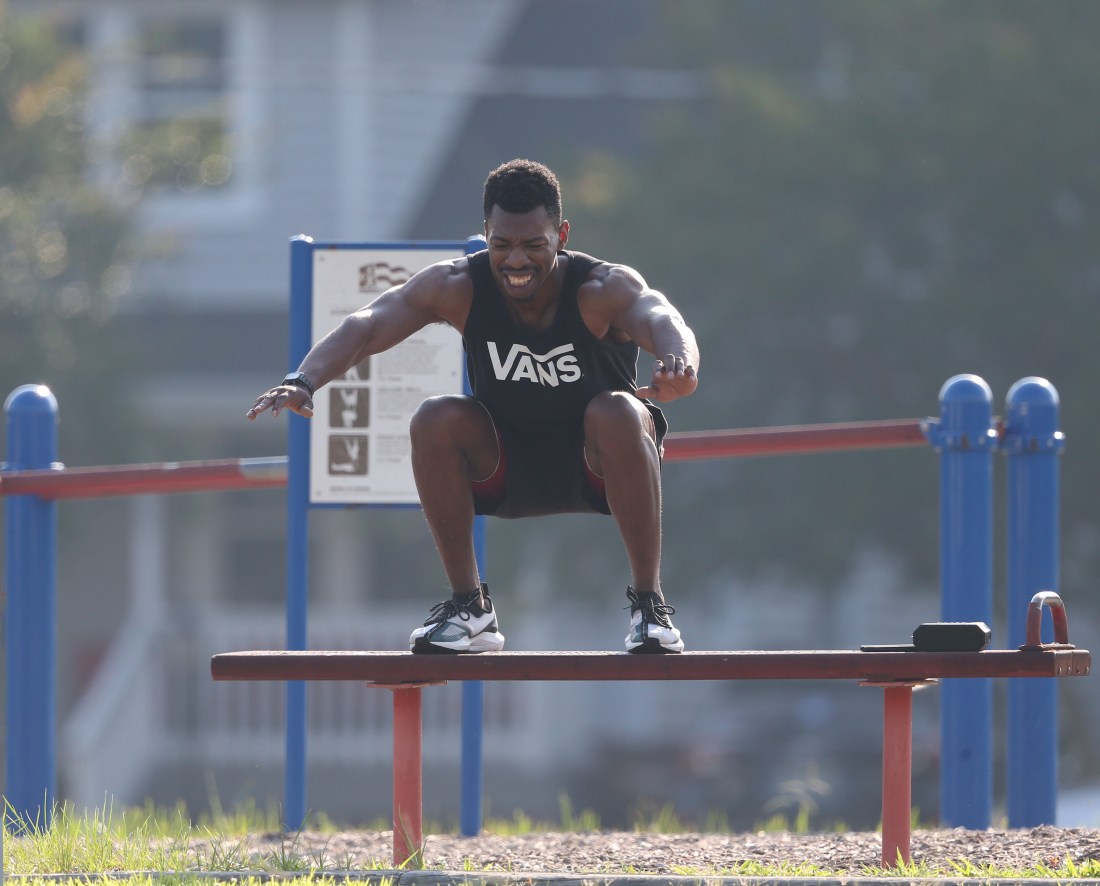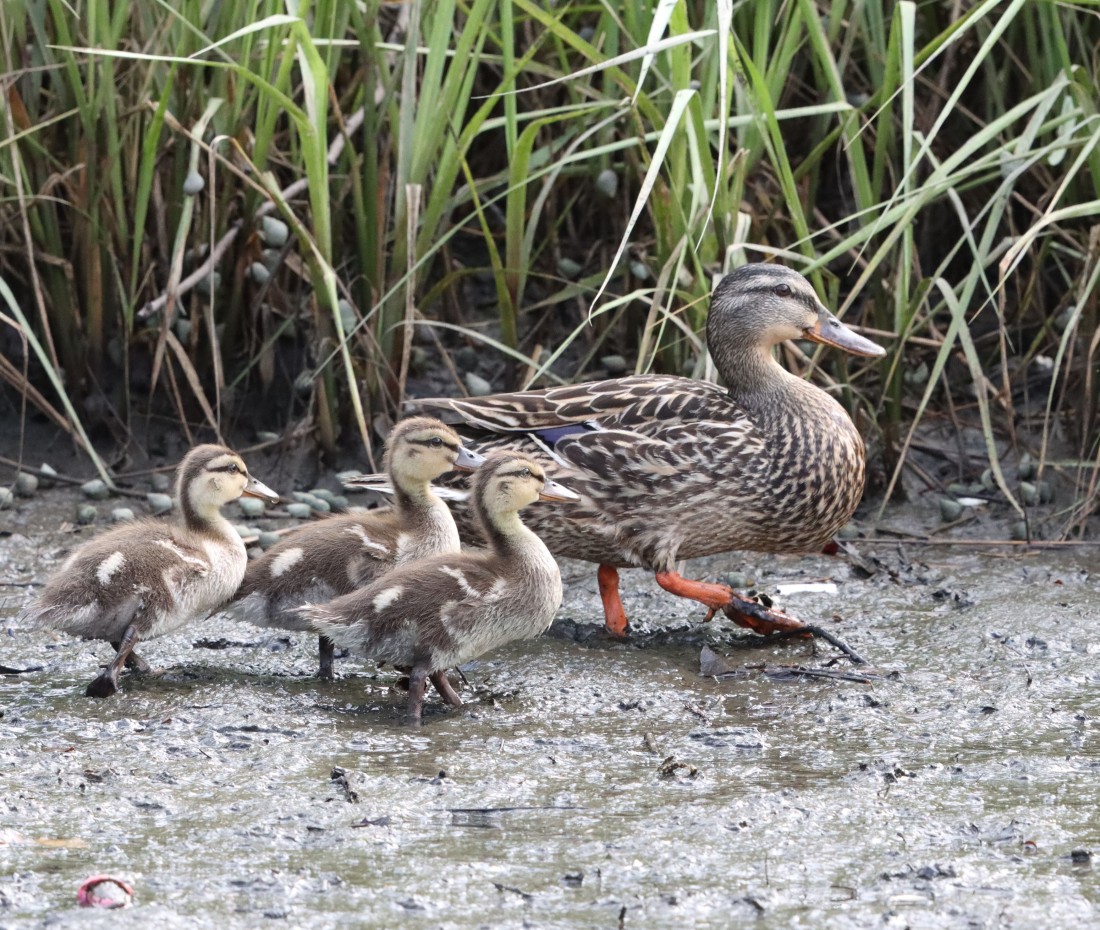We all need to laugh, maybe now more than ever.
These 3 young Green Herons have just seen their first round-tripper and are watching the baseball as it exits the park.

Having just finished listening to a sometimes-impassioned discussion, this young Mallard is feeling better about returning to school.

Let’s Resume
This is the third and final installment of a story of a personal photo shoot—a story that began when I came upon a female Mallard and her brood in a Chesapeake, VA park. What have we touched on so far? Here, I think, is a good list:
- Good light is essential
- Take advantage of/practice in neighborhood parks
- Dismiss the idea that there are no photo opportunities
- Experiment—even with lighting
- The welfare of your subject is paramount
- Be prepared, and be prepared to wait
- Know your subject; understand your target
- Zero in on gesture and look for the unusual
- Shoot at eye level whenever possible
- Gear is important, but technique is king

Juvenile Green Heron
The Photo Shoot
Here’s how we ended “Anatomy of a Photo Shoot, Part Two.”
As I sat on the deck, and knowing that I wouldn’t be shooting fast action, I tweaked the Manual with Auto ISO settings. The aperture was already locked at f/5.6. Since I was using a focal length of 700mm—and with the reciprocal rule in mind—I lowered the shutter speed to a fast-enough 1/1000. Lowering the shutter speed would also allow more light to reach the sensor. And that would, in turn, dial down ISO and noise.
But as I sat on that deck, which, ironically, has been demolished, I did something else before beginning to shoot. With my lens shade gently pressed against the 2nd lowest railing for support and only seconds from taking my first photos of the Mallards, I made certain that the grid display was showing in the viewfinder.
I never shoot anything without the grid display enabled. Why? Because I want all my images to be as level as possible, and I don’t like having to make unnecessary corrections in post. Remember, it’s about getting things right in-camera.

Wrapping Up
I began a list of photo tips in my most visited blog post to date, “Bird Photos and Photo Tips at Midyear.” One of the last items on that list was “Don’t turn off your camera until you get back to the car.”
Well, I’m glad I followed that advice on the morning of 7/7, the morning of the photo shoot. When I got back to my truck, I spotted a gentleman working out on some equipment nearby. As I studied his routine, I noticed it included stopping at a bench to do bodyweight squats. I decided to capture him as he held one and grimaced.

In this instance, I waited, knew my subject, captured gesture, played with lighting, and so on. I also caught a “decisive moment,” something I’ve talked about before.
After I took the shot, I asked fellow FM Forums members what they thought. FM Forums, or Fred Miranda Forums, is a place where photographers can share their work. It’s also a place to learn about what works and what doesn’t.
Dan wrote, “Nice “moment” capture! The grimace, position…..I am feelin’ it!” Kent responded, “Very nice capture on the timing and expression. ![]() Background and veiling flare from the lighting are a bit of a bugger, but still … very nice capture.” Kent then provided a monochrome version, and a version that I love. With color removed and with the background less focused, the subject really pops and becomes a stronger point of interest.
Background and veiling flare from the lighting are a bit of a bugger, but still … very nice capture.” Kent then provided a monochrome version, and a version that I love. With color removed and with the background less focused, the subject really pops and becomes a stronger point of interest.

I ran into the gentleman above several weeks later. I brought up the photo on my phone and showed it to him. He was surprised but appeared excited. He gave me his email address and I sent him a copy. I’ve done this same kind of thing, now, several times. It’s fun and really gratifying.
And This Just In
I wrote, “Gear is important, but technique is king.” Those words are true, but they’re a bit off the mark. Vision is king. Marie Read, author of Mastering Bird Photography, puts it like this: “I consider fieldcraft, creative vision, and determination as contributing far more to great images than having the newest camera or biggest lens.”
Thanks to all who’ve sent me feedback. Thanks to Bill who likes my blogs because they go “beyond the photograph.” Bill, those words may become a future blog title. Thanks to Betty Sue who’s written that she finds my work “inspiring.” Thanks to Morris for considering one of my posts “educational as always.” And thanks to Andrea who described some recent photos as a mixture of “funny, touching, and elegant.”
Quip, Question, Quote
We’ll end with two lines from Martha Steele’s latest Bird Observer column. I love Martha’s writing and have quoted her often.
“In the face of what seems to be an increasingly troubled country and world, I take refuge in the birds and the natural world.”
“I hope that together we find common ground and our way forward, just as our avian friends and other wildlife find theirs.”

Beautiful as always
LikeLike
Thanks so much, Lucy. I’m glad you’re enjoying these. I have a lot of fun putting them together.
LikeLike
Green Herons are my favorite herons. What a privilege to see such young ones. I’m jealous! William
LikeLike
They are special birds, William. We’re fortunate to live a mile or two from a colonial nesting site. Thanks for reading and commenting.
LikeLiked by 1 person